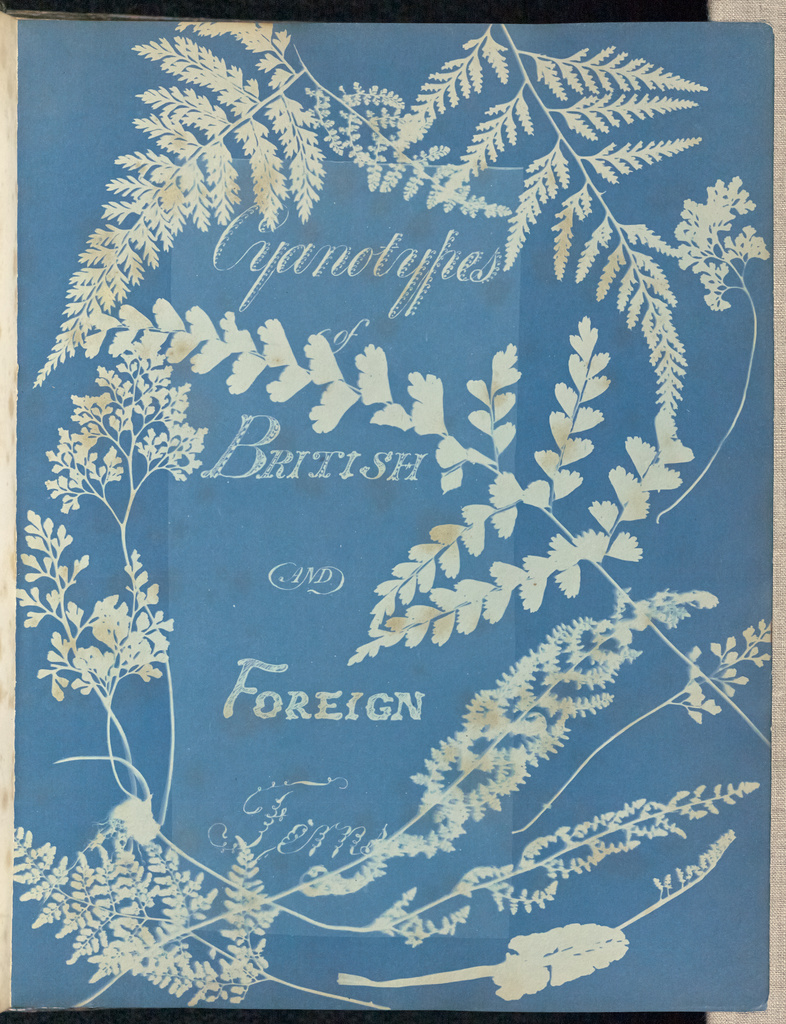After completing the highly ambitious, decade-long project Photographs of Blue Algae: Cyanotype Impressions in the summer of 1853, Anna Atkins turned to new botanical subjects. She would eventually produce several unique presentation albums with cyanotypes of ferns and flowering plants. Atkins most likely collaborated on these albums with her dear friend, Anne Dixon. Dixon came to Halstead Place for an extended stay in the summer of 1852 to comfort Atkins who was deeply shaken by the death of her father and frequent scientific partner John George Children earlier that year. Photo historian Larry Schaaf suggests that it was during this stay or perhaps one the next summer that Dixon began assisting Atkins and creating her own cyanotypes. Thus, it becomes difficult to know whether surviving works from this time period were created by Atkins, Dixon, or both.1

It was Dixon who presented this particular album of one hundred plates entitled Cyanotypes of British and Foreign Ferns to her nephew Henry Dixon in 1853 as indicated by the gilt stamped lettering “A. D. to H. D. 1853” on its front cover. Captain Henry Dixon (1824-1883) shared his aunt’s passion for photography and would even go on to apply for a patent in 1861 as a result of his experimentation with sensitized plates and films. Unlike British Algae, which was made in multiple copies and distributed to numerous friends and institutions, there is only one other presentation album by Atkins and Dixon that is known to be of the same subject matter and format. It is now housed at the National Science Museum in Bradford, England.2 The Getty’s album contains one hundred cyanotype plates including three title pages with ornate plant elements that introduce the reader to the subject matter (fig. 1) and its two sections. While the plant types are extensive, Atkins and Dixon did not endeavor to be as all-encompassing in their representation of British or foreign ferns as Atkins had been with Blue Algae.
The album’s intriguing provenance continues beyond Captain Dixon, who passed it down to one of his nieces, a Miss Wedderburn, who eventually gave it on February 20, 1932 to the Paris Lodge of the Girls Friendly Society, an organization sponsored by the Church of England. This is noted in an inscription on the front inside cover. The Miss Wedderburn in question was most likely one of Henry’s sister Caroline’s (1827-1899) nine daughters. The three top candidates are Frances Caroline Valentina Wedderburn (1854-1932) who died on Fiji on September 10, 1932, after the gift was made to the Girls Friendly Society; her sister Annie Edith Webster-Wedderburn Wakefield (1859-1943); or another sister, Maude Gertrude Annesley Webster-Wedderburn Brownlow (1871-1930), whose third husband Harry Blaikie Brownlow could have donated the album in her honor after her death. At some point, possibly when the Girls Friendly Society closed its Paris branch in 1939, the album left the society’s library. It eventually came onto the market, passing through several hands in Paris and England before eventually being sold to the J. Paul Getty Museum in 1984.3
- Carolyn Peter, J. Paul Getty Museum, Department of Photographs
For more information about the artist and this work,
see:
- Armstrong, Carol. “Cameraless: From Natural Illustrations and Nature Prints to Manual and Photogenic Drawings and Other Botanographs,” in Carol Armstrong and Catherine de Zegher. Ocean Flowers: Impressions from Nature. Princeton, New Jersey: Princeton University Press, 2004.
- Schaaf, Larry. Sun Gardens: Cyanotypes by Anna Atkins. New York: The New York Public Library, 2018.
